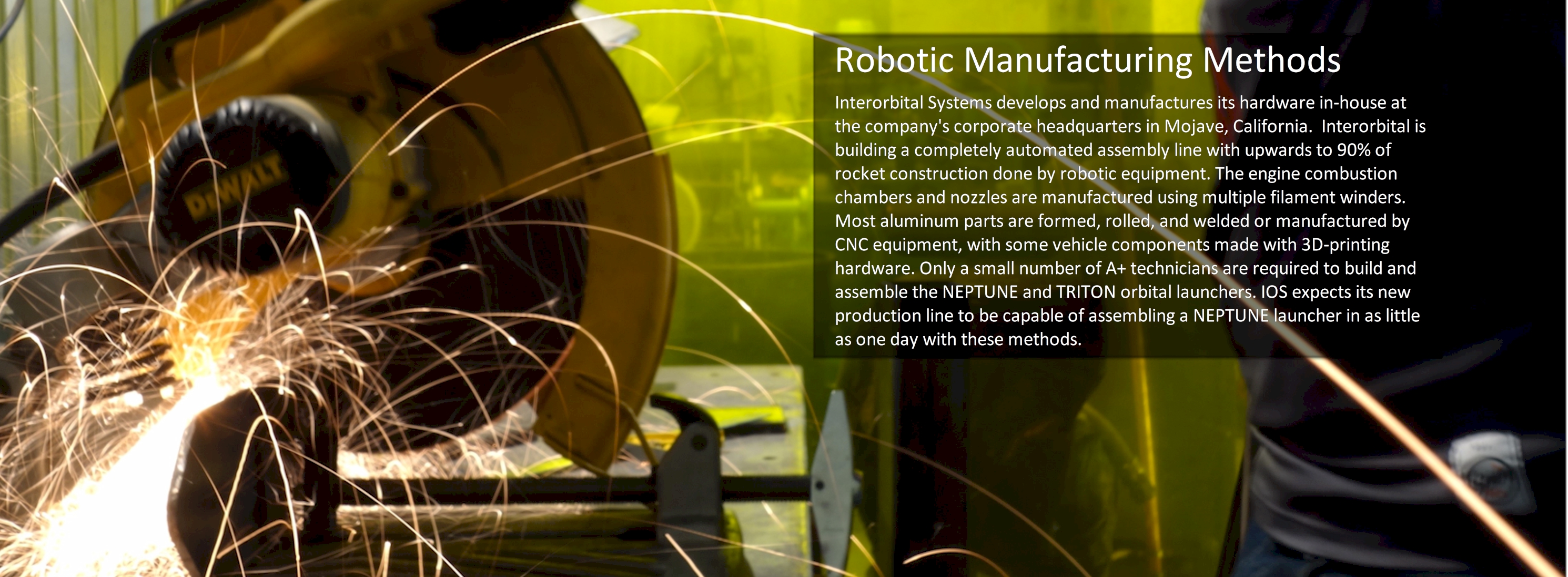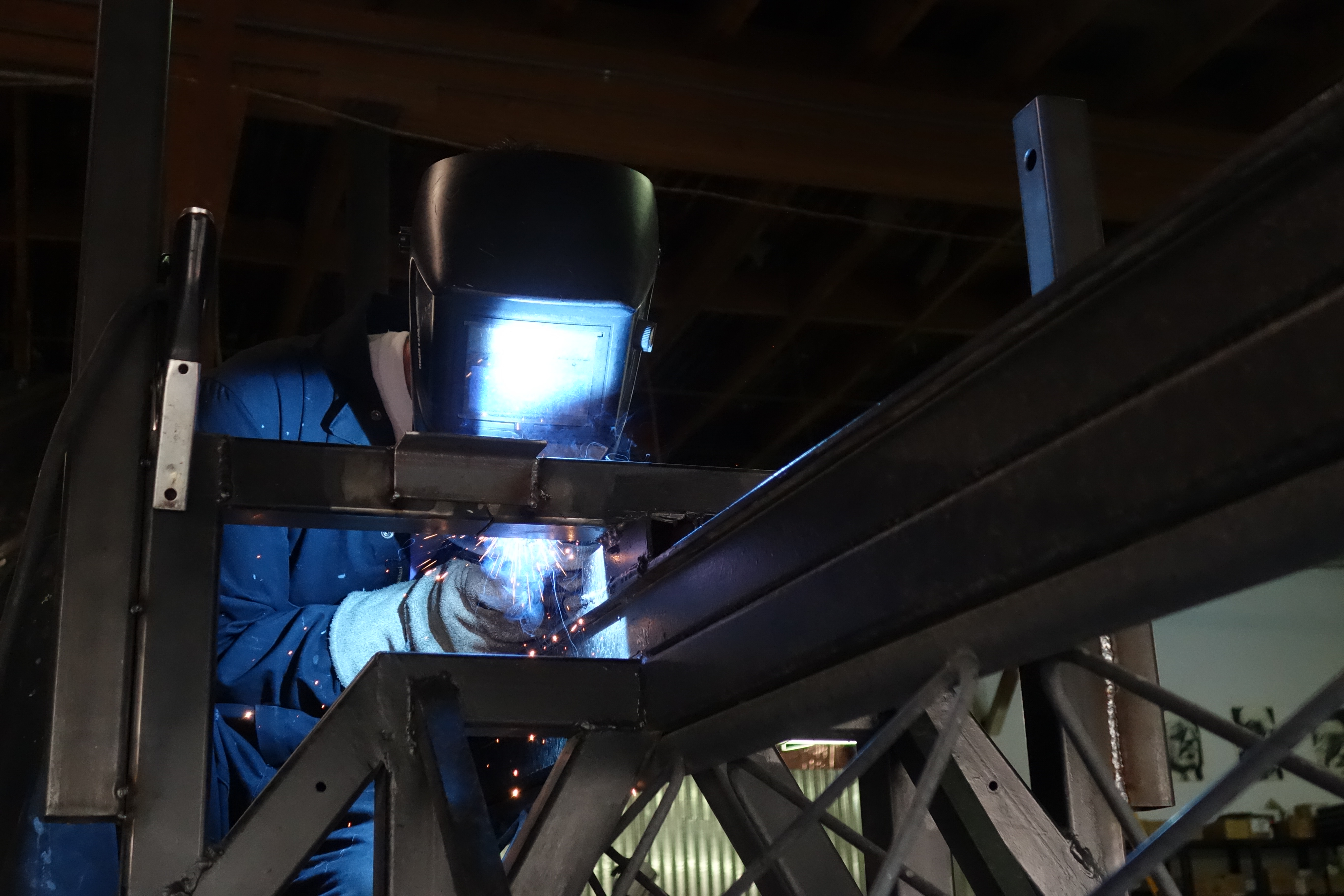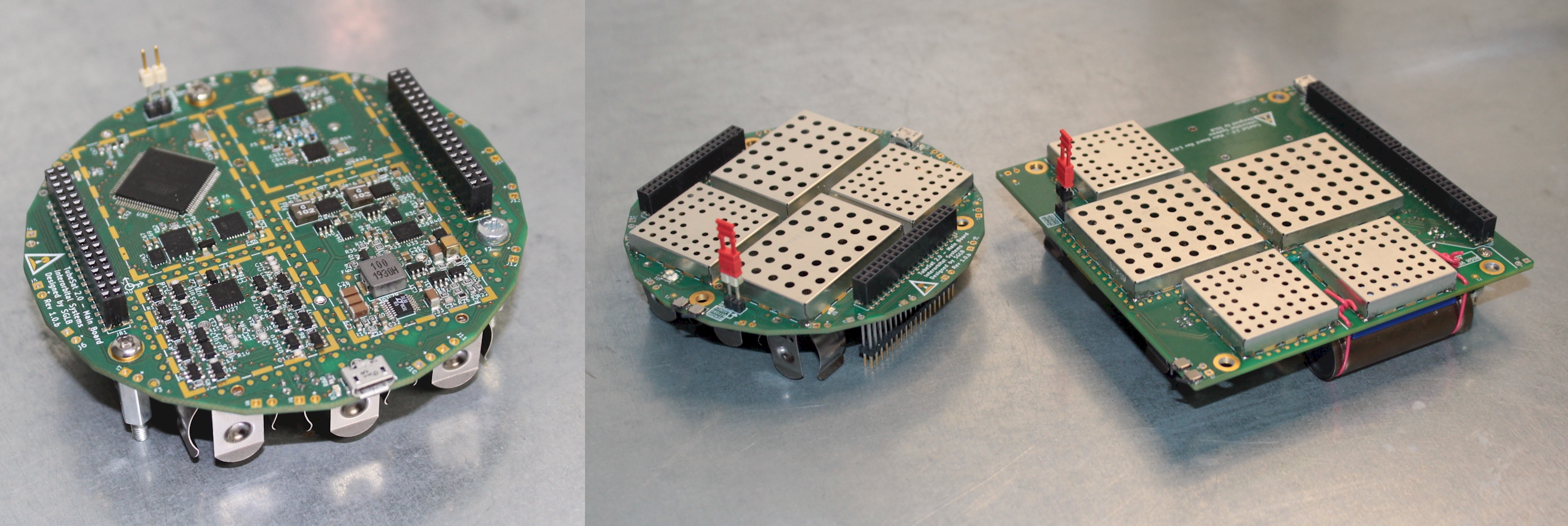
Interorbital Systems has developed a full line of in-house designed and built filament winders. A filament winder is a high-speed additive composite manufacturing machine. Filament winding involves the wrapping of epoxy-impregnated fiber (tow) around a central form (mandrel). The over-wrapped mandrel is cured, or hardened, in a special oven. We use the machines to rapidly construct our ablative-cooled rocket engines, rocket fairings and other lightweignt composite parts. These components were previously manufactured using slow, labor-intensive composite hand-layup techniques. The filament winder help guarantee a higher standard of manufacturing quality in IOS' next generation of launch vehicles.
Propellant Tank Construction
In addition to filament winding, IOS also uses the hand lay-up method for the manufacture of some composite rocket components. Fiberglass fabric, carbon fabric, epoxy, and phenolic resin are used to build these parts. Hand lay-up is more labor-intensive than filament winding, but facilitates rapid prototyping and easy construction of some complex parts.

Every IOS rocket engine is designed, built, and tested in-house. Interorbital had two dedicated, fully-instrumented static engine test sites at the Mojave Air and Space Port. Each rocket engine is ground tested and certified before integration into a launch vehicle. The aluminum rocket engine injector components are mass produced using CNC methods. Other engine components, including the ablative engine combustion chamber and nozzles, are manufactured using filament-winding manufacturing techniques.
Static Test: NEPTUNE Booster Engine Prototype
IOS operates a fully equipped metal fabrication facility at its headquarters in Mojave. Ninety-five percent of our rocket components are prototyped, machined, or welded in-house. Both metal and composite parts are produced in our rocket factory. All engineering staff are required to be proficient in hands-on machining and other advanced manufacturing techniques; they work directly with the assembly technicians to achieve complete team involvement with the end product: the rocket. Integrating engineering, design, and manufacturing personnel increases the speed and efficiency of the space hardware development process.

Interorbital Systems develops and builds custom electronic printed circuit assemblies and electronic subsystems. These include our TubeSat and CubeSat Kit satellite boards and our rocket control hardware (ex: rocket steering controllers and guidance system components. Our PCBs are assembled by automated machines (ex: pick and place and ovens)
